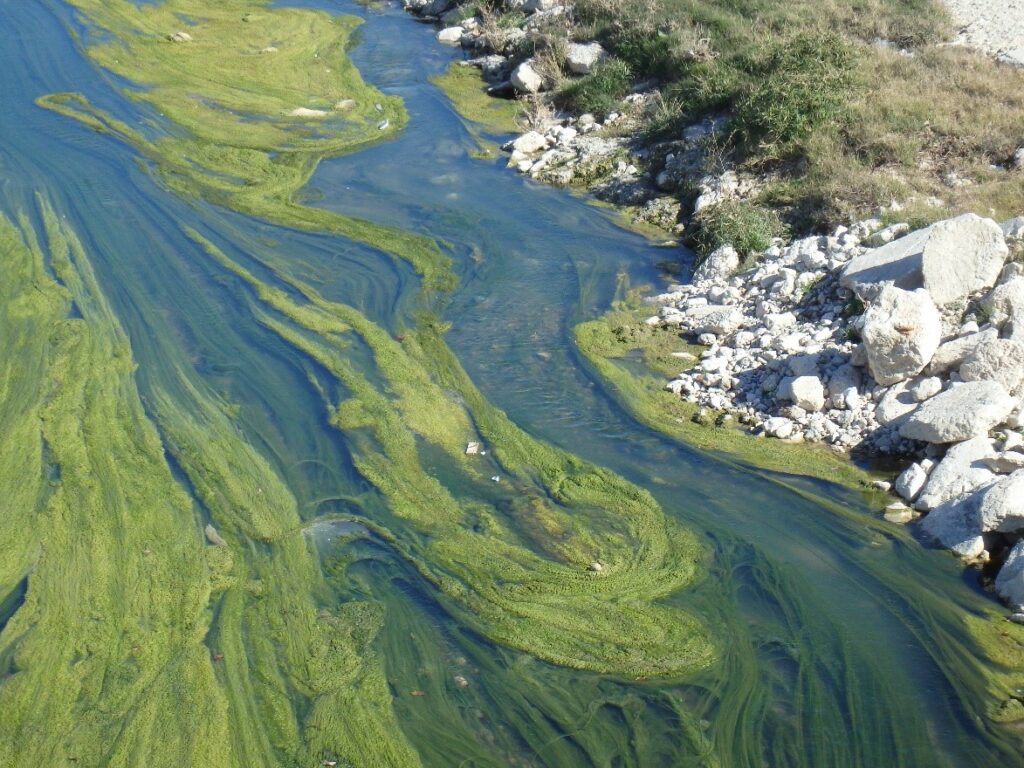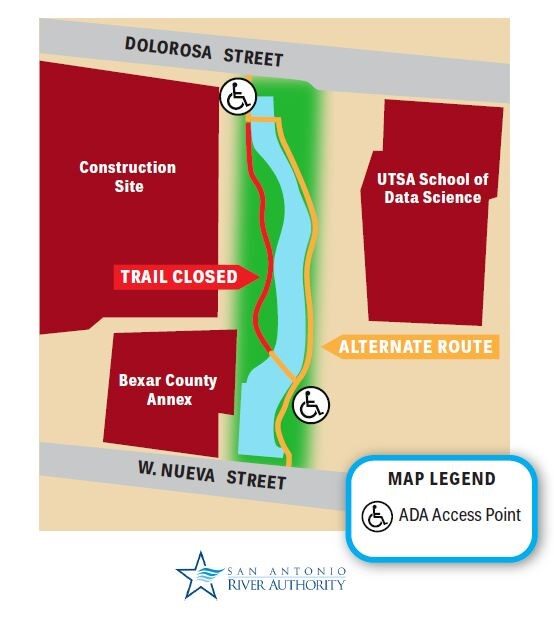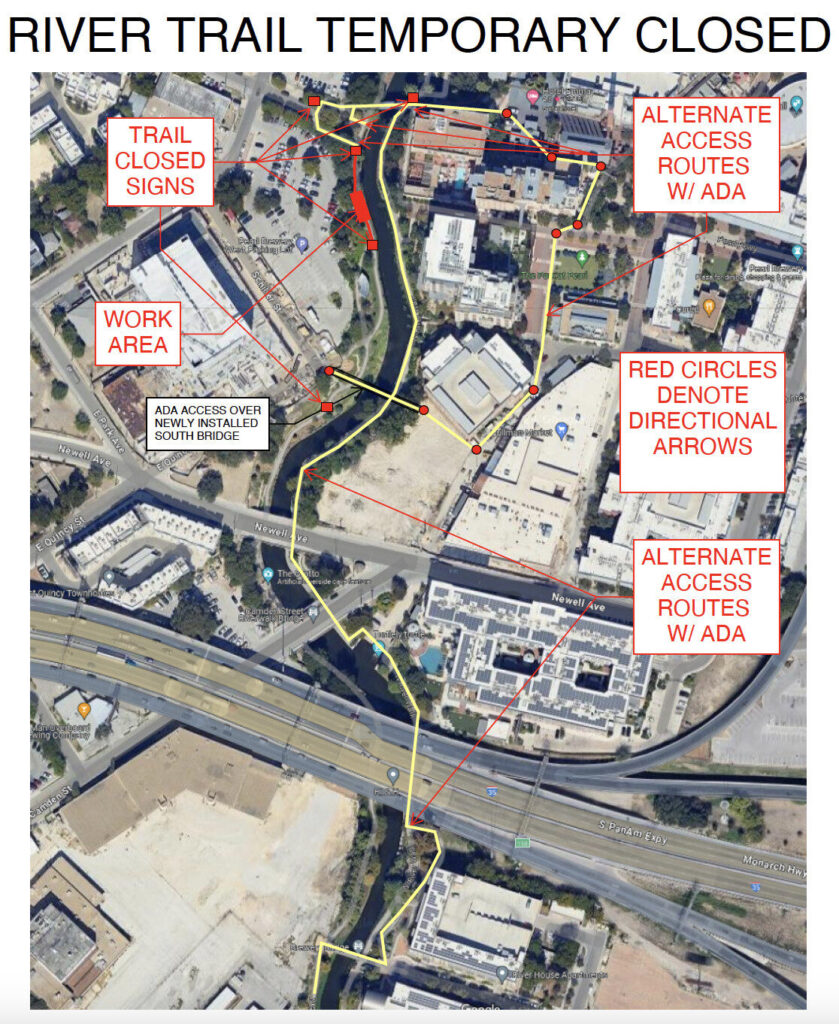A medida que la gente se acerca al agua durante los calurosos meses de verano, muchos pueden notar las láminas verdes de una familia de organismos similares a plantas llamados algas. La Autoridad del Río San Antonio (Autoridad del Río) suele recibir muchas consultas del público, ya que la presencia de algas plantea muchas preguntas. ¿La presencia de algas significa que la calidad del agua es mala? ¿Son tóxicas o tienen algún beneficio para la naturaleza? Las respuestas son intrigantes y tan variadas como las especies de algas que se pueden encontrar en el río. Cuenca del río San Antonio.
Siga leyendo mientras compartimos datos sobre las algas y cómo los cambios en el medio ambiente y el sistema acuático pueden afectar la cantidad de algas que se pueden encontrar a lo largo del río San Antonio.
Datos y beneficios de las algas
Algas Nitella (crédito de la fotografía: Universidad Texas A&M)
El río San Antonio y los cursos de agua que lo rodean albergan de forma natural numerosas especies de algas de muchas formas y colores. Si bien producen su propio alimento a través de la fotosíntesis y producen oxígeno como las plantas, pertenecen a una clasificación de organismos llamados protistas, que no son animales, plantas ni hongos. De hecho, las algas están relacionadas con las algas marinas, las amebas y las diatomeas. Algunas pueden ser unicelulares y solo se pueden ver a través de un microscopio, mientras que otros individuos pueden crecer hasta 50 metros de largo.
En el río San Antonio hay una gran variedad de especies de algas que forman parte de un sistema acuático equilibrado. Muchos insectos larvarios y peces pequeños consumen algas como fuente principal de alimento. También pueden servir como refugio para quienes se esconden de los depredadores o como escondite para quienes están de caza. Las algas filamentosas son una especie unicelular que crece en cadenas a lo largo del fondo de arroyos y ríos, sobre rocas o plantas y en una estera sobre la superficie del agua. Esta alga puede proporcionar hábitat para una amplia gama de insectos y vida acuática. Nitella (Nitella spp.) y pasto almizclero (Chara spp.) son algas multicelulares que pueden confundirse con plantas. Además de ser una fuente de refugio para los organismos acuáticos, muchas especies de patos comen la hierba almizclera.
A veces se confunden otros tipos de organismos con las algas. Los organismos unicelulares, como los protistas o las bacterias, o incluso los animales microscópicos, como los briozoos, pueden reproducirse hasta el punto de formar grandes colonias que parecen una estera en la superficie del agua o en rocas y estructuras. Otro organismo unicelular que a menudo se confunde con las algas son las cianobacterias (especie: Anabaena sp. y especie Microcystis.), también conocidas como algas verdeazuladas, son un grupo de bacterias fotosintéticas que producen toxinas que pueden ser dañinas para los seres humanos, las mascotas, el ganado y la vida silvestre.
Preocupaciones por la proliferación de algas
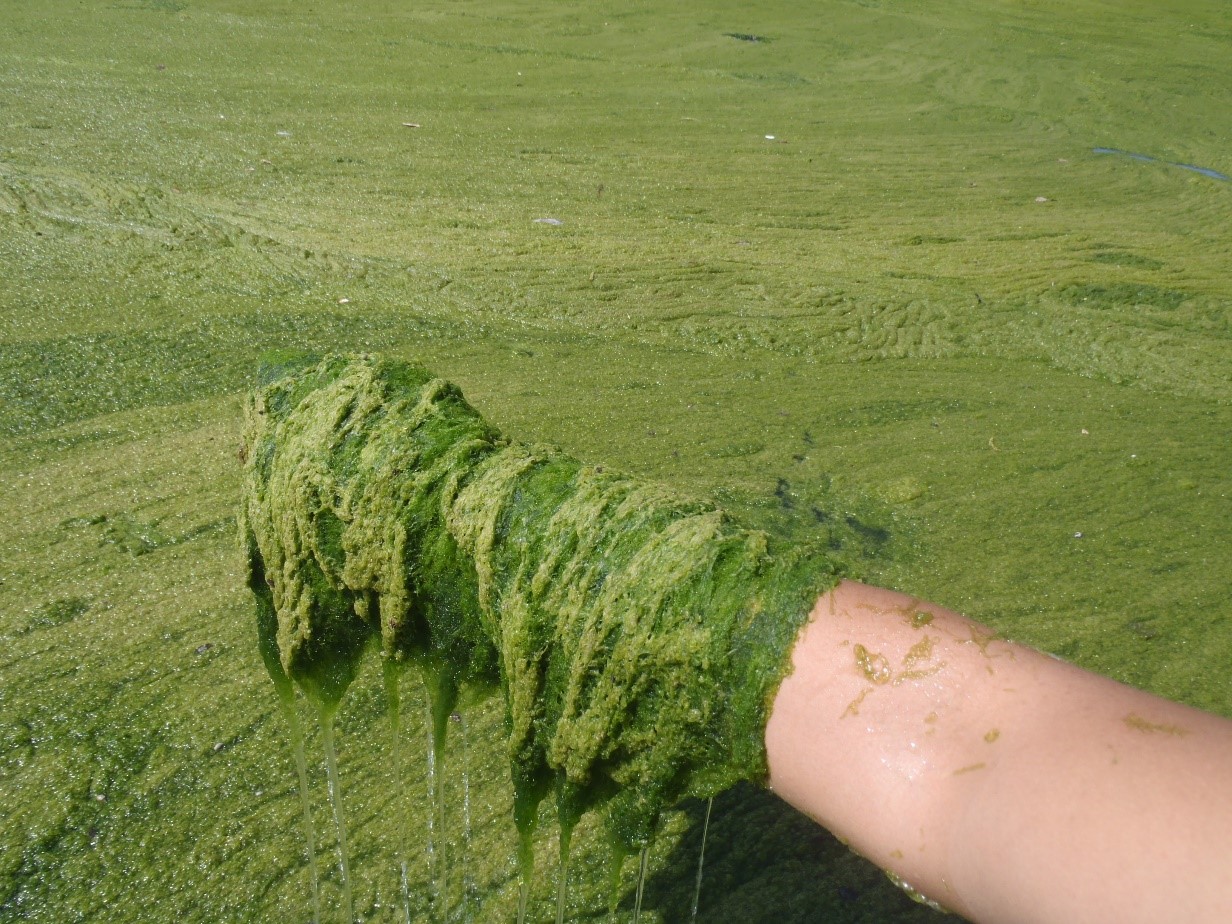
Las grandes floraciones de algas suelen captar la atención del público e incluso aparecen en los medios de comunicación cuando afectan a la recreación y el disfrute. Las algas responden rápidamente a los cambios en el entorno, como la temperatura y la química de los arroyos. Las floraciones de algas suelen producirse cuando se introduce un exceso de nutrientes en el agua. Las grandes cantidades de algas pueden bloquear el sol, privando a las plantas subyacentes de luz solar o incluso obstruyendo los caminos para la vida acuática.
Ciertas especies de algas, como el alga dorada (Prymnesium parvum), crean una toxina que puede dañar a los animales que respiran por branquias, como los peces y los mejillones. Las algas que no producen toxinas pueden proliferar sin control con una sobreabundancia de nutrientes y causar un gran daño a las poblaciones de peces. A medida que las algas proliferan más allá de lo normal, continúan consumiendo nutrientes hasta que casi no les queda ninguno. Una vez que los nutrientes se han utilizado, las algas comienzan a morir, dando paso a especies descomponedoras como bacterias y hongos. Los peces y los insectos acuáticos terminan asfixiándose, a veces por miles, debido a la falta de oxígeno.
Lo que puedes hacer
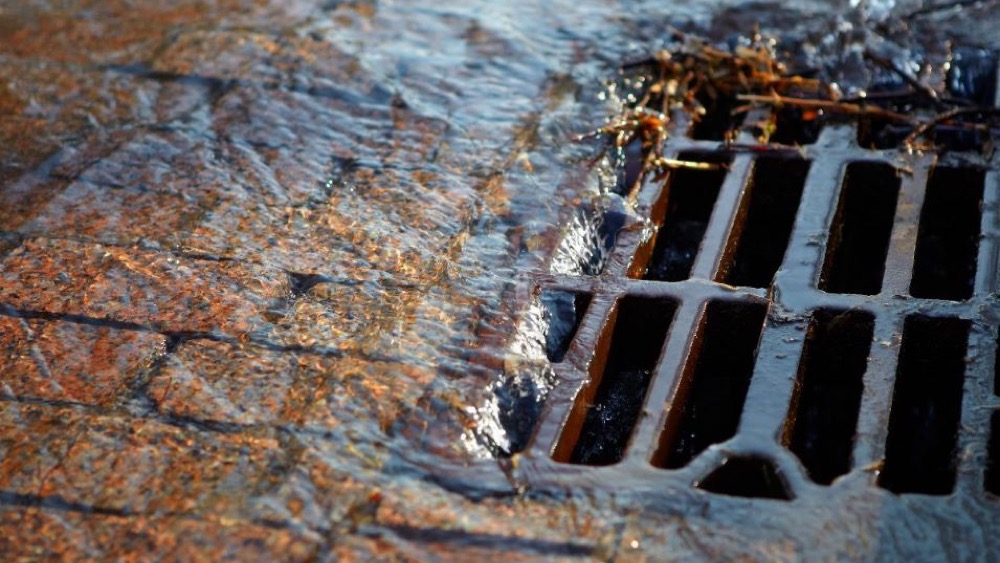
El exceso de nutrientes, especialmente los que se encuentran en los fertilizantes para césped, puede llegar al río San Antonio durante y después de un evento de lluvia. Los fertilizantes, junto con otros productos químicos para el jardín, pueden escurrirse por las propiedades cuando llueve, por las calles, hacia los desagües pluviales y hacia los arroyos de la zona y el río San Antonio, sin tratamiento. La escorrentía de agua de lluvia que va sin tratamiento a los desagües pluviales y directamente a los arroyos y ríos de la zona se conoce como escorrentía de aguas pluviales, o simplemente como agua de lluvia. Evite también barrer, clasificar o soplar los restos de su jardín hacia la calle, ya que están llenos de nutrientes y las aguas de lluvia también pueden llevarlos al río.
Si ve algo que le preocupe en el río o arroyos de San Antonio, que puede ser una proliferación de algas o una muerte de peces, no dude en comunicarse con la Autoridad del Río. Investigaciones ambientales equipo sin costo al (866) 345-7272 o en línea a través de nuestro Contáctenos El personal científico en el campo y en el laboratorio ambiental investigará su inquietud y tomará las medidas apropiadas.

